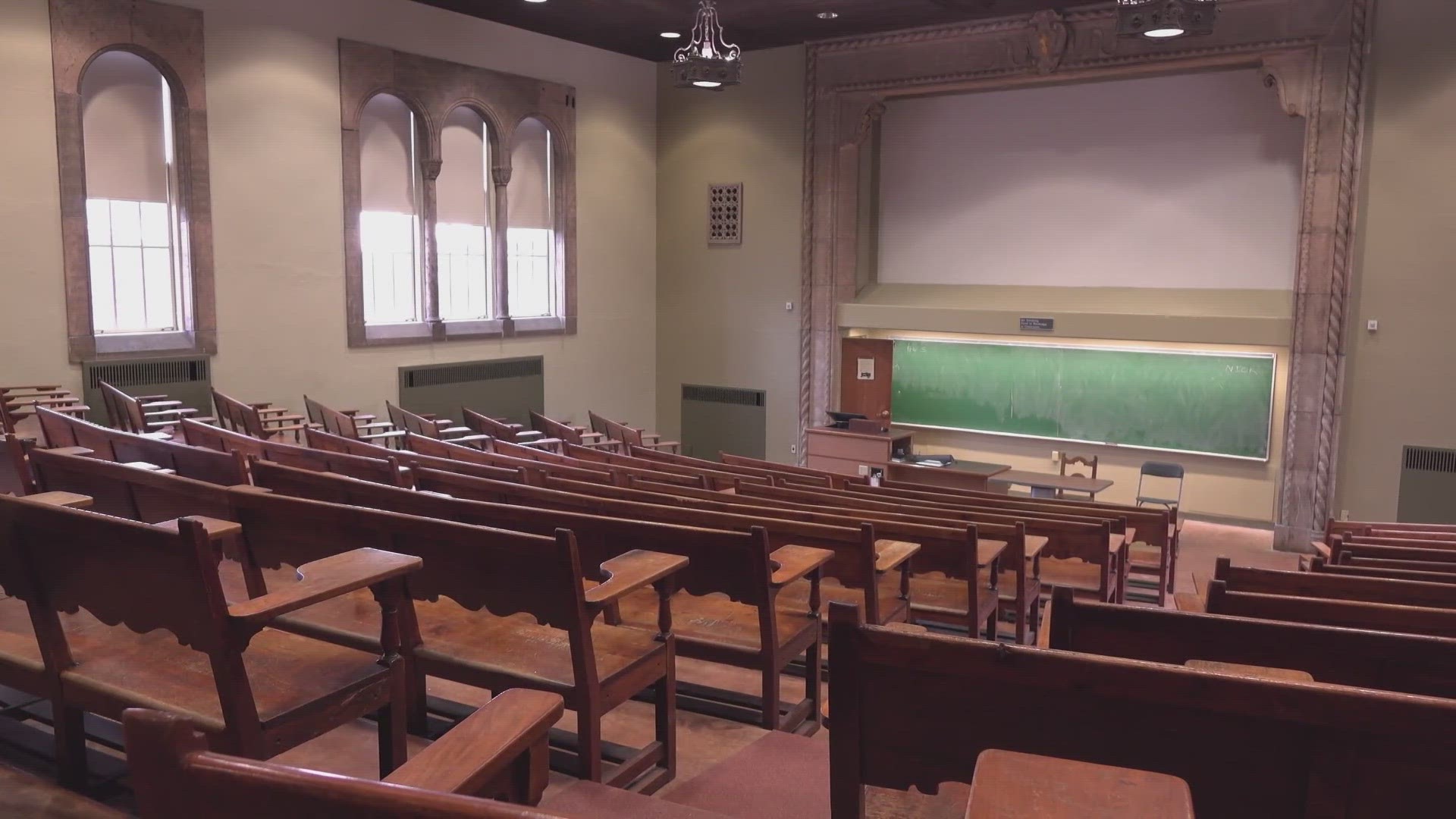WESTLAKE, Ohio — Decades ago, the message was clear: Earning a college degree was the best pathway to financial success.
Today, the future of higher education has never been more uncertain. Enrollment has declined, schools are cutting staff and programs, and institutions are even closing.
It’s a far cry from 2010, when college enrollment in the United States hit an all-time high. Roughly 21.2 million students filled campuses, among them an influx of adults seeking new degrees post-recession. Expansion projects also brought bigger buildings, technology, and programs.
This was the heyday of higher ed, but things have changed.
“We actually started this project before the pandemic. I think we began it in late 2019.”
3News reached out to Sarah Butrymowicz, investigations editor with nonprofit education news site The Hechinger Report. In 2020, its series "Colleges in Crisis" detailed the financial stress facing a growing number of schools. Early signs pointed to a pair of factors: a declining birth rate and cuts in funding.
"We actually started this project before the pandemic — I think we began it in late 2019," Butrymowicz remembered. "Particularly in places like the Midwest, you have fewer teens graduating from high school — just fewer teens overall — that can go enroll in college, and a lot of states cut higher ed funding during the recession and hadn't restored it to pre-recession levels. So we knew that there were a lot of institutions that were struggling."
As the pandemic began and colleges sent students home, The Hechinger Report created a financial fitness tracker, the purpose being to assess the fiscal health of public and nonprofit schools.
The tracker took public data and applied it to four different metrics: enrollment, retention, average tuition, and endowment/costs. Out of 2,662 schools included, more than 500 showed warning signs in two or more metrics.
"And they were not evenly distributed throughout the country," Butrymowicz explained. "Ohio had the highest number in our sampling."
The tracker identified 36 Ohio schools with red flags four years ago. Today, college financial issues are a part of our state's reality, with Baldwin Wallace University, Notre Dame College, Lake Erie College, Lakeland Community College, and Miami University all in the news recently over their budget struggles.
As a whole, the forecast for higher education isn't good, as schools compete over a shrinking pool of students.
"Twenty years ago, every parent was telling their children, 'You need that four-year degree. This is your ticket to the American lifestyle we've become accustomed to and having opportunities,'" Kelly MacLean explained. "But today, that's changed."
MacLean is the founder of The Kelly MacLean Achievement Center, which prepares students for college with testing prep, grade-specific tutoring, and career exploration. MacLean says teens are reevaluating what a four-year degree means to them.
"Some kids are looking at it like, 'Do I need the debt that goes with it?'" she told WKYC. "I have students who are going into the trades. I have students who have become auto mechanics making $150,000 a year. The Illuminating Company has an amazing program, and those people are making $80,000 a year as linemen."
MacLean's job is still focused on helping students find the right fit for them. Now that includes digging into a school's financial stability.
"Because college admissions their job is to get heads in beds, so to speak," she said. "It is a sales job. They're going to tell you everything's fabulous."
In the first 10 months of 2023 a total of 30 nonprofit and for-profit colleges closed their only or final campus location, according to an analysis of federal data by the State Higher Education Executive Officers Association. While that's down from 2022's total of 48 closures, both numbers are still a sharp jump from a prior high of 13.
It's a troubling trend higher education analysts say isn't going to improve anytime soon.
"I think there are still college closures predicted ahead," Butrymowicz admitted. "There's a lot of questions about what happens after pandemic relief money runs out. The folks that I have talked to don't think the higher ed financial health is going to be problem-free."
In Part Two of our series "Higher Ed: Uncertain Future," we'll look at the impact on prospective students. Not only must they consider affordability in finding the right fit, but now must weigh financial stability in the school they choose.

